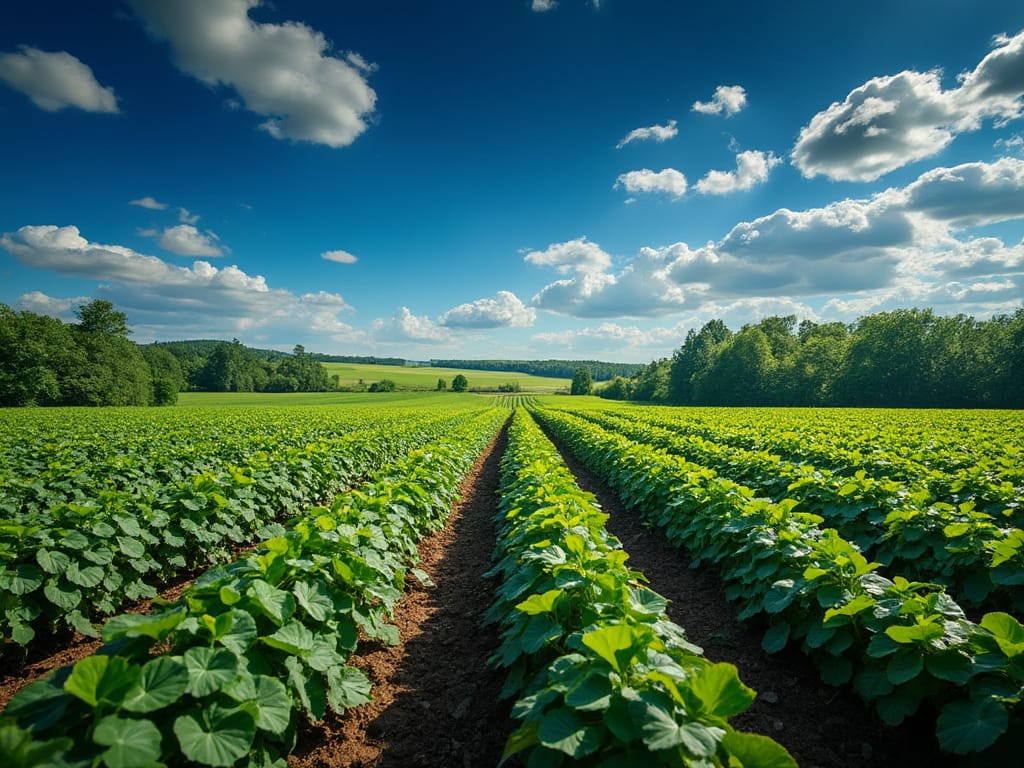
The agricultural sector in the United States is undergoing a technological transformation like never before. At the heart of this revolution is the Internet of Things (IoT), a network of interconnected devices that communicate and share data to optimize operations. IoT is unlocking unprecedented levels of efficiency, enabling farmers to make data-driven decisions that enhance productivity and sustainability. In this article, we'll explore how IoT is changing the American farming landscape and what it means for the future of agriculture.
Smart farming, also known as precision agriculture, leverages IoT technology to monitor and manage agricultural operations with high precision. By integrating sensors, drones, satellites, and software platforms, farmers can collect real-time data on various aspects of their farms. This integration not only boosts efficiency but also ensures that resources are used optimally, leading to higher yields and reduced environmental impact.
For a comprehensive understanding of how IoT is revolutionizing American agriculture, visit our article on Unlocking Efficiency: How IoT is Changing the American Farming Landscape.
Water management is a critical concern for farmers, especially in regions prone to drought. IoT enables precision irrigation by using soil moisture sensors and weather forecasts to determine the exact amount of water needed. This targeted approach ensures that crops receive the optimal amount of water, promoting healthy growth while conserving this precious resource.
"Implementing IoT-based precision irrigation has reduced our water usage by 30%, while increasing crop yields." — John Smith, Corn Farmer in Iowa
Benefits of Precision Irrigation:
IoT devices can monitor the health and well-being of livestock through wearable sensors that track vital signs, activity levels, and location. This continuous monitoring allows farmers to ensure that their animals are healthy and productive.
Benefits of Livestock Monitoring:
Drones and satellites equipped with multispectral imaging cameras provide detailed insights into crop health. These technologies enable farmers to detect issues such as pest infestations or nutrient deficiencies early, allowing for prompt and targeted interventions.
Benefits of Crop Monitoring:
IoT allows for the remote monitoring and control of agricultural machinery. By tracking the performance and condition of equipment, farmers can ensure that their machinery operates efficiently and remains in good working order.
Benefits of Equipment Management:
IoT generates vast amounts of data that, when analyzed, provide valuable insights into every aspect of farming operations. Big data analytics and artificial intelligence (AI) algorithms process this data to help farmers make informed decisions that enhance productivity and sustainability.
By processing data from various sources, farmers can:
AI algorithms can identify patterns and make predictions that human analysis might miss, providing deeper insights into farm operations.
Applications of AI in Agriculture:
For more on how AI and machine learning are transforming agriculture, explore our article on Improving Farmers' Finances in Iowa and Nebraska with ERP Software Tools.
IoT contributes significantly to sustainable farming practices by optimizing resource usage and minimizing environmental impact.
Targeted Application: Apply fertilizers and pesticides only where needed, reducing overall chemical usage and minimizing environmental runoff.
Environmental Protection: Minimizes runoff into waterways, protecting local ecosystems and ensuring cleaner water sources.
Optimized Operations: Reduces energy consumption through efficient machinery use and precise resource management.
Renewable Integration: Manages renewable energy sources like solar panels on farms, promoting the use of clean energy.
For insights into how sustainable farming practices are being enhanced by technology, read our piece on ERP Solutions for Sustainable Farming in the Mississippi Delta Region.
While IoT offers numerous benefits, there are challenges that need to be addressed to fully realize its potential in agriculture.
Rural Broadband Access: Limited internet connectivity in remote areas hinders IoT adoption. Reliable connectivity is essential for the seamless operation of IoT devices.
Solution: Government initiatives and satellite internet services are expanding access, making IoT more feasible for rural farmers. Learn about automating agricultural logistics in Nebraska and Minnesota to understand how improved connectivity can transform operations.
Cybersecurity Risks: Protecting sensitive farm data from breaches is crucial as more operations become digitized.
Solution: Implement robust security protocols and encryption methods to safeguard data. Explore how blockchain is ensuring transparency and trust in U.S. agriculture for more on secure data management.
Upfront Investment: High initial costs can be a barrier for small farmers looking to adopt IoT technologies.
Solution: Subsidies, grants, and scalable solutions make IoT more accessible, helping farmers overcome financial barriers. Discover how ERP software helps grain farmers in Texas and Illinois manage risks to see how financial tools can support technology adoption.
The integration of IoT in farming is still in its early stages, but the potential is immense. As technology continues to evolve, IoT will play an increasingly critical role in shaping the future of agriculture.
Data Sharing: Farmers can collaborate and share data for mutual benefits, enhancing community resilience and collective knowledge.
AgriTech Startups: Innovation is fueled by startups developing specialized IoT solutions tailored to various agricultural needs. For example, leveraging AgTech for a smart agricultural future in Nigeria highlights how startups are driving technological advancements globally.
The Internet of Things is undeniably transforming the American farming landscape by unlocking efficiency and enabling smarter agricultural practices. From precision irrigation to livestock monitoring, IoT technologies empower farmers to optimize resources, increase productivity, and promote sustainability. As the technology continues to evolve, its adoption will become even more critical in meeting the challenges of modern agriculture.
By integrating these advanced systems, farmers are not only enhancing their operational efficiency but also contributing to a more sustainable and productive agricultural future. The continued evolution and adoption of IoT and related technologies promise to unlock new potentials, ensuring that American agriculture remains competitive and resilient in a rapidly changing world.
Find Agriflow in other countries of Africa